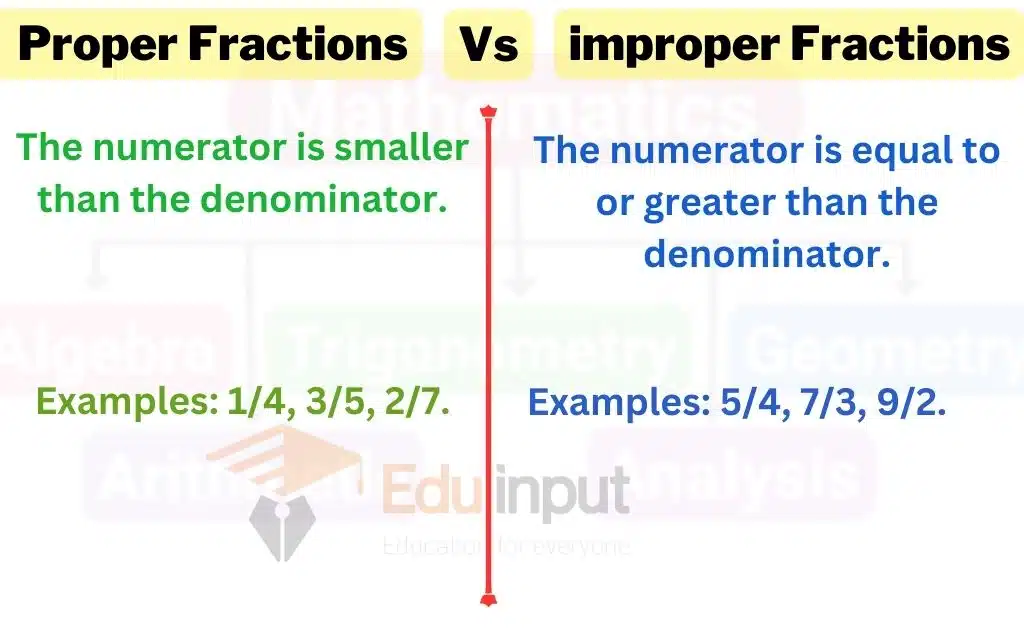Difference between Proper Fraction and Improper Fraction
The key difference between proper fraction and improper fraction in mathematics is that a proper fraction has a numerator that is smaller than its denominator, while an improper fraction has a numerator that is equal to or greater than its denominator.

Proper Fractions Vs Improper Fractions
In proper fractions, such as 1/4, 3/5, and 2/7, the numerator (the number above the fraction line) is smaller than the denominator (the number below the fraction line). These fractions represent a part of a whole or a value less than 1. For example, 1/4 represents one out of four equal parts.
In contrast, improper fractions, such as 5/4, 7/3, and 9/2, have a numerator that is equal to or greater than the denominator. These fractions represent a whole or a value equal to or greater than 1. For example, 5/4 represents five equal parts, where each part is larger than one whole unit.
| Characteristic | Proper Fraction | Improper Fraction |
|---|---|---|
| Numerator vs. Denominator | Numerator is smaller than denominator. | Numerator is equal to or greater than denominator. |
| Representation | Represents a part of a whole or a value less than 1. | Represents a whole or a value equal to or greater than 1. |
| Value Range | The value of the fraction is between 0 and 1. | The value of the fraction is equal to or greater than 1. |
| Examples | 1/4, 3/5, 2/7. | 5/4, 7/3, 9/2. |
| Visual Representation | ||
| Additional Examples | 2/9, 3/8, 1/3. | 4/4 (which simplifies to 1), 8/5, 6/6. |







Leave a Reply